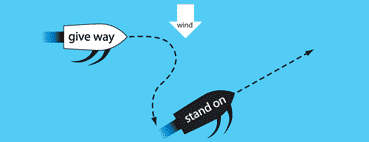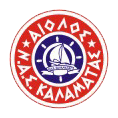It's a wide open space, and the lanes aren't marked, but there is still a right place to be.
Know where that is, and why it is.
Know who gives way to whom, and what your responsibilities are.
90% of fatal accidents involve the Skipper not having enough boating knowledge and experience.
Every boat, whether it is a ship, a yacht, a dinghy, a sailboard or a personal water craft (PWC) such as a ‘jetski’, must have a person in charge - a Skipper.
It is the Skipper’s responsibility to ensure safety, which includes knowing and understanding the rules that apply before heading out on the water.
Lookout
You must keep a good lookout at all times. It is your responsibility to stay alert for other boats, swimmers, hazards and obstacles. Listen as well as look.
Speed
All boats must travel at a safe speed, taking into account the amount of boat traffic in the area, weather conditions and when visibility is affected by glare or city lights.
Specifically, you must not exceed a speed of 5 knots (a fast walking speed) if you are;
within 200 metres of the shore
within 200 metres of a boat displaying a divers flag
within 50 metres of any other boat
within 50 metres of a person swimming
on a power boat if any person has any part of their body outside the rails or edge of the deck.
You must be over the age of 15 to operate any power boat which is capable of speed exceeding 10 knots. This includes dinghies and PWCs.
When Two Boats Meet
There are rules which apply to boats on the water just as there are for cars on the road. You must understand and obey these rules and do everything possible to avoid a collision.
When two boats are approaching each other, one has the right of way and it is called the stand on boat.
The other boat is called the give way boat. The give way boat must make an early and obvious manoeuvre so there can be no confusion.
The give way boat must pass astern of (behind) the stand on boat, while the stand on boat maintains the same course and speed.
Every boat that is overtaking must give way. You are overtaking if you are approaching another boat anywhere in a 135 degree sector at its stern.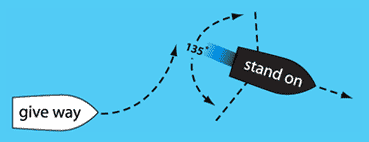
In Channels and Harbours
every boat must keep to the starboard (right) side of any channel
inside a harbour (normally shown on the pilotage limit on the chart) you must keep out of the way of any ship over 500 tons (which is about 50 metres in length)
do not create a wake which causes unnecessary danger to other boats or people
you must not anchor in a channel
all small craft must keep out of the way of larger vessels which are restricted by the channel.
When Power Meets Power
you must give way to another boat on your starboard (right)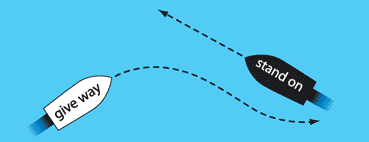
if you meet head on, both boats must turn to starboard (right)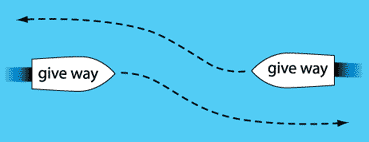
When Things Go Wrong!
if the give way boat does not appear to be giving way, the stand on boat must take action. The stand on boat should turn to starboard (right). If it turned to port it could turn in to the path of the give way boat.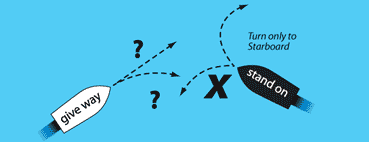
When Power Meets Sail
the power boat gives way, unless the sail boat is overtaking
a sailing boat has to give way to a special case power boat, which displays certain lights or day shapes
sailing boats should avoid sailing in a narrow channel. They have to give way to power boats restricted by the channel.
When Sail Meets Sail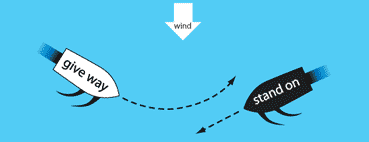
when the wind is coming from different sides, the boat with the wind on the port (left) side has to give way
when both boats have the wind on the same side the windward (upwind) boat has to give way
